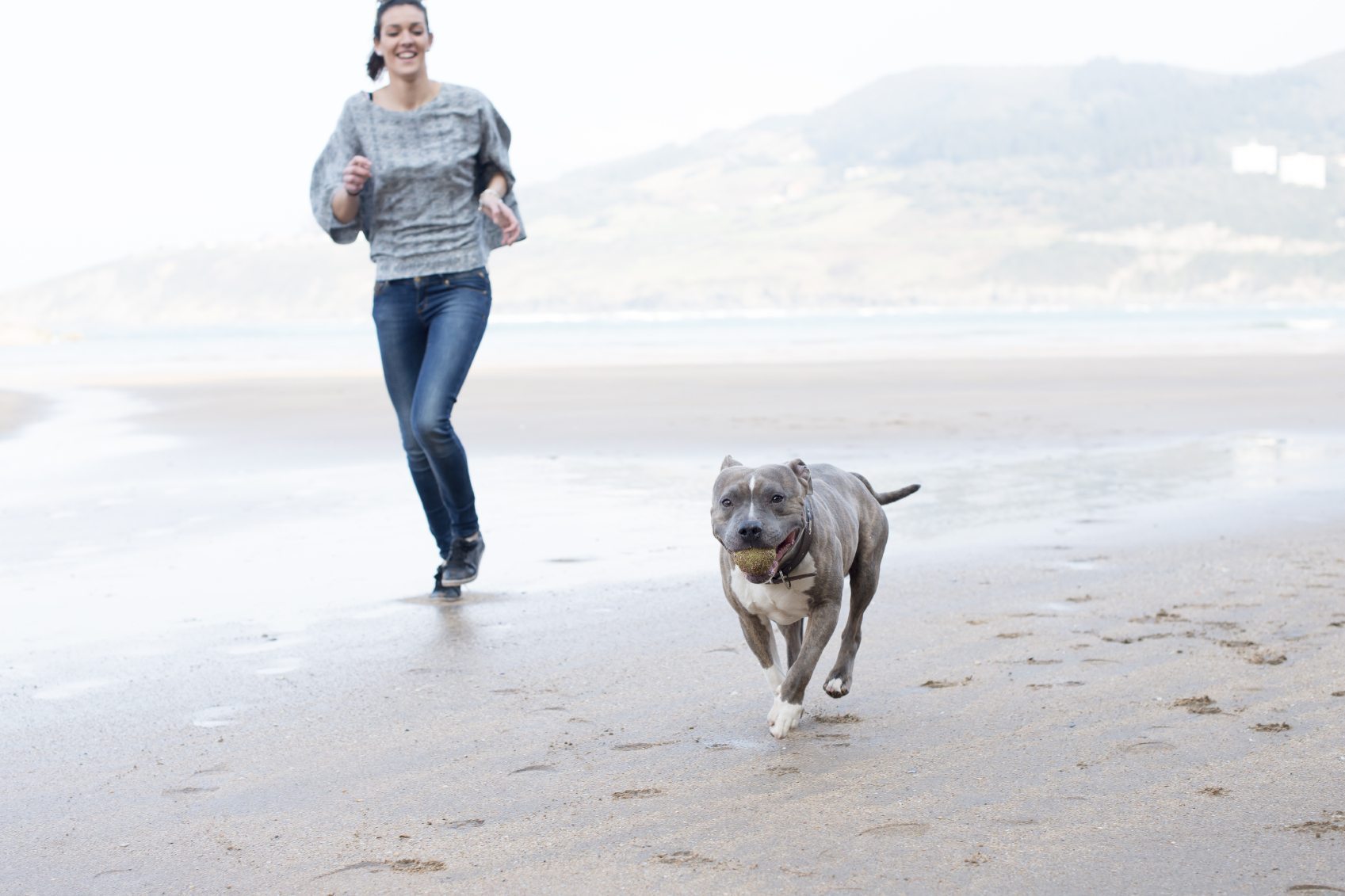Having a pet is one of the most rewarding experiences in life. Exercising your pet, especially when it comes to dogs, will help keep you both healthy while strengthening the bond between the two of you. Exercising together is a great way to maintain strong muscles, lungs and heart.
Start Slow
When you exercise with your pet, be aware of the physical condition of your animal first, before getting into a vigorous exercise routine. Begin with leisurely walks, especially if your dog is older. Go for short walks to start, and then gradually increase the time and distance. If your dog is young, then you may want to add ball fetching or Frisbee throwing to your routine after walking. All three are a great way to wear your young pal out.
Conditioning your pet’s paw pads is important, so start your walks on soft surfaces such as grass, sand or dirt before totally walking on cement or gravel. The sooner you begin walking your dog on a leash, the easier it will be to control your dog when running or walking.
Just like you, it is not a good idea to exercise your dog immediately after eating. They need time to digest their food and to drink small amounts of water before and after exercise. Digestive upsets can occur with a full stomach, so scheduling meals and walks at the regular times each day is always a good idea.
Precautions
Weather conditions play a role, especially in extreme temperatures and climates. Dogs can experience heat stroke or frostbite – just like us. Any snow or ice build-up in their paws should be removed immediately upon returning home. The summer heat can make cement and asphalt extremely hot and should be avoided by walking on grassy areas instead.
Walking your dog in the woods can be great fun; however make sure you check for ticks, seeds, dirt and foxtail. Foxtail is hard, seed-bearing grasses with sharp points on one end. They can become embedded in the hair, eyes, ears, nostrils and paws and work their way ‘in’ not ‘out’ causing infections or worse.
Love the Leash
Most communities today have a ‘leash’ law, so check with your local authorities for clarification. Walking your dog is not only an opportunity to increase his fitness level, but also a chance to train him not to jump on other adults or children, or otherwise injure others. Whatever exercise routine you decide to do, remember that it is all about spending special time together.
Obesity Risks
Obesity is running rampant in this country for adults and children, as well as dogs, due to a lack of exercise. This increases the risk for breathing problems, arthritis, diabetes, heart disease and continued weight gain. Your dog’s obesity issues could also stem from access to too many treats and table food, and not enough time walking.
4 Great Exercises To Do With Your Pet
Here are some exercises you can incorporate into your daily routine:
1. Multiple Short Walks
Taking long walks may not always be feasible with your schedule, so taking multiple walks throughout the day can really help boost the metabolism in both of you.
2. Sit-Ups and Fetch
You can play fetch with your dog while lying on the floor indoors or outside on a mat. Contract your abdominal muscles while doing a sit-up while holding a toy or Frisbee to throw. Do a sit-up every time your dog brings the toy back to you. Repeat.
3. Jumping Squats
Stand with your feet shoulder width apart. Hold on to a toy while squatting. Jump up and toss the toy in the air and watch your dog jump for the toy. Repeat.
4. Circuit Training
Set up an obstacle course in your backyard using a Bosu ball, dumbbells, STEP or bench, jump rope, etc. Walk your dog around the obstacle course, and stop and do an exercise at each station.
Don’t forget your cat
Cats need exercise too, so find something they will chase or play with on a regular basis – one trick that always seems to work is watching them chase the light coming from a flashlight. It is a great way to get them moving.
Provide plenty of fresh water and watch for signs of excessive panting, hyperventilation, overheating or exhaustion. If you see those signs, stop exercising and let them rest. If recovery is not happening, seek medical attention immediately. Common sense always prevails. Enjoy your workouts!










